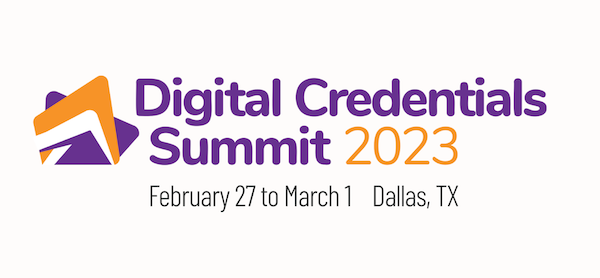Published on
Creating Incremental Value for Modern Learners

With this shift to a new era of higher education, institutions have to prepare learners for the workforce. The need for workforce-readiness and alignment is critical for higher ed to survive in this competitive environment. In this interview, Tyson Heath and Kacey Thorne discuss how innovative credentialing can prepare your institution for success,
The EvoLLLution (Evo): Why is it so important for higher ed institutions to focus on credentials, especially today?
Tyson Heath (TH): As we continue to think about where higher education currently is and the opportunities we are moving toward by being more workforce-aligned, it is really important for educational entities to expand their credentials at all levels. As reported by the National Clearinghouse last fall, there over 30 million adults have some college but no credential. Many of these learners are saddled with substantial debt and, worse still, lack the return on their investment because of the absence of platforms to showcase their educational experience in a way that communicates its value to workforce entities. So, we have to place an emphasis on creating synergy between workforce and higher education entities—especially as we think about defining that value. One idea is to implement unified credentialing systems that are widely understood by all consumers. Within this system, short-term stackable credentials can be issued to learners along the continuum of their educational and workforce journey. The stackability and incremental value within the credentialing space not only improve learning but also translate to workforce outcomes.
Evo: What does it take to roll out that innovative credentialing practice across the institution? And how do you create that internal buy-in?
TH: From Western Governors University’s (WGU) perspective, we deploy a master curriculum that allows us to implement a credentialing framework in a more streamlined manner. Our learners engage in a standard path as they navigate through their studies to ensure fundamental knowledge is acquired in a meaningful way. Our credentialing framework ensures that high-demand workforce skills inform the creation of competencies embedded in each course and ultimately assessed in a relevant and authentic way.
In a traditional higher education model, there could be some nuances within creating a unified credentialing approach, but there are huge opportunities that can be translated for the department level. It’s best to understand the learning outcomes faculty want learners to have, then work backwards to infuse these high-demand workforce skills into courses. Once the course-level work is completed, the overall program-level learning outcomes can be leveraged to ensure the credential has workforce value. As learners progress through their program, faculty can find ways to include opportunities to embed microcredentials in the overall degree. There are also some opportunities for traditional institutions to flip the model by starting with workforce skills, looking at the program-level learning outcomes and infusing that work into individual coursework. Finally, all that work can inform the opportunities to implement new credentialing practices.
That said, when it comes to rolling out an innovative unified credentialing framework, institutions should look at ways to align it with their workforce partners. The focus should always be on the learner and making sure they acquire the skills that address workforce and community needs and communicating them through a consistent language. Embracing a transparent model grounded in a change management philosophy and adhering to those things are important to implementing things across campus.
Kacey Thorne (KT): With buy-in, there are two things to consider. One is understanding the value and return for students. Second is figuring out a way to implement your credentialing strategy at your institution that makes most sense for you. There’s an entry point for everyone, and it might not be an entire unified credentialing framework. It may even start as simply as unpacking the real value of any credential for your learners by understanding the critical skills they are building and demonstrating. Even small moves toward more transparency around credential value are steps in the right direction.
Evo: What are some of the challenges that come with implementing credentials, from institutional and workforce standpoints?
TH: Right now, one of the main challenges facing educational providers is getting individuals to believe that college prepares them with the skills needed to be successful in the workforce. Implementing a framework can be a challenge in itself, but getting others excited and engaged in this idea of valuable incremental education only adds to it. Even when we do create wonderful frameworks, if the learner is not seeing or understanding the credential’s value, it is hard for them to champion it. Learners must be empowered to champion their credential, or we run the risk of losing the real external value.
As we know, the credential space is not fully defined yet, so not everything may align. There are thousands upon thousands of microcredentials issued out there without a common language or framework. This is generating a lot of confusion for learners and the workforce. Another challenge is that these credentials are not being fully implemented in a portable and transparent way that empowers learners to showcase their achievements. We lack a formal, well-accepted, open standard that allows for seamless portability between organizations.
But that gives us opportunities to grow as a collective force. Starting at the design phase, what can we do to create value for our learners and graduates that aligns with workforce outcomes. Once that is determined, we can create and implement a unified credentialing framework by designing the skills, competencies and assessments to support the credentials and making sure the credentials are issued in portable and transparent modalities, so learners can articulate the skills they’ve mastered during their educational journey.
Evo: How can higher education organizations help value credentials that break away from traditional constructs and time-based measures to a more relevant learner student-centric value measures?
KT: There are two primary ways an institution can think about credentials from a student value perspective. It’s all about relevance and return. How relevant is the credential and pathway to a student and their career goals? And what is the return on investment? Will the student ultimately benefit from the credential by unlocking new opportunities that provide a beneficial economic return? At WGU, we are committed to ensuring all our credential programs have value through the lens of return and relevance for students.
One of the key ways we evaluate our credentials for relevance and return is by looking at the skills in highest demand and ensuring those skills are foundational to all our programs. Students are building critical skills across any higher education pathways; however, we typically don’t talk about them in the language of skills. We still speak in the language of courses and credit hours. By unpacking the critical skills learners are demonstrating in their credential attainment and making those skills more explicitly transparent, we can take a more student-centric view to valuing credentials based on relevance and return vs. traditional time-centric constructs.
Evo: What are some best practices to classify skills and credentials that will lead to those workforce outcomes in a more consistent and meaningful way across the institution?
KT: One key practice is to leverage open skills and structured, connected data in new ways to understand the high-value skills students need. Using open skills libraries like the ones we have built at WGU and those from other organizations in the Open Skills Network, we can get a clearer, more scalable glimpse into the skills employers want and ensure we have built them into our credential pathways. This allows us to establish skills as a common language and classification system that ultimately empowers students to achieve their career goals.
TH: We looked at existing frameworks and found the alignments through research, even on the credentialing side, to see how others are speaking this language. By doing this additional work, we are empowering our learners to embrace their credentials and speak knowledgeably about the workforce skills and alignment to existing frameworks. This work really helps us align everything better with both learners and employers.
Evo: How do you see skills and credentials playing a role in the future of higher education over the next five years?
KT: We’re going to see skills rise as a critical component for evaluating the value of any higher ed program or credential. This is growing as a critical capability to better meet learners’ needs. In the next five years we’ll see more institutions grappling with transforming their models to gain greater value and relevance for learners based on the labor market’s changing needs.
We’re going to see growing demand for more rapid, cost-effective means of upskilling and reskilling. We will need different and more flexible types of educational pathways to help individuals learn, build and demonstrate skills as needed.
Evo: Is there anything either of you wants to add about implementing credential frameworks?
KT: Focusing on the value of credentials and skills through a student-centric lens is critical for higher ed because the market is moving so quickly. It’s not just a question of staying current with new credentials but being more relevant and responsive to student needs. That’s why this focus on credentials, skills and trying to adopt a new language is important.
TH: It’s about finding ways to embed incremental value within degree programs. This way, learners have an immediate return on their investment. A unified approach to credentialing creates actionable data that learners take into the workforce while they continue pursuing higher-level credentials. I hope we can all work together to solidify a common language and ensure we are serving learners best by finding the incremental value within the degree trajectory to provide each learner with a credential.
This interview was edited for length and clarity.
Tyson and Kacey will be presenting on this topic at the 1EdTech’s Digital Credential Summit in early March. To learn more, click here.

Author Perspective: Administrator



